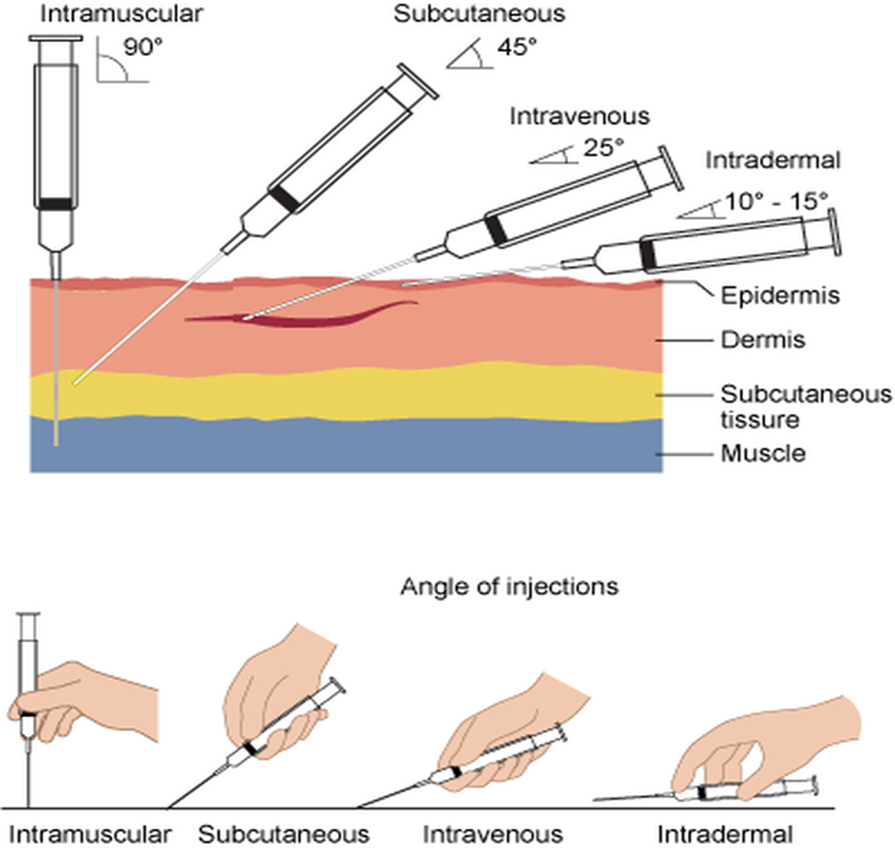Choice A reason:
When encountering a patient who appears motionless and cyanotic, the first action should be to assess their level of consciousness. Asking loudly if they are okay can help determine if the patient is responsive or unresponsive. If there is no response, this indicates that the patient may be unconscious and requires further immediate assessment and potential intervention.
Choice B reason:
The head-tilt-chin-lift maneuver is used to open the airway of an unresponsive patient who is not suspected of having a spinal injury. However, this is not the first step. Before performing any maneuvers, it is essential to determine the patient's level of consciousness and whether they are breathing.
Choice C reason:
The Correct Answer is A
Choice A reason:
Occult blood detection is not a process that occurs naturally after a venipuncture to control bleeding. It is a laboratory test used to detect blood in the stool that is not visible to the naked eye. This test is unrelated to the venipuncture process.
Choice B reason:
The term "Phlebotomists" refers to healthcare professionals who perform venipuncture. It is not a process but a profession. Therefore, it does not fit the context of the question regarding the control of bleeding after venipuncture.
Choice C reason:
Hematopoiesis is the process of creating new blood cells in the body and occurs in the bone marrow. While it is an ongoing process essential for replenishing the body's blood supply, it is not directly related to controlling bleeding after a venipuncture.
Choice D reason:
Hemoconcentration is a condition where the blood concentration of cells and solids is higher than normal, usually due to a loss of plasma. This can occur during venipuncture if the tourniquet is left on for too long, but it is not a process used to control bleeding.
Nursing Test Bank
Naxlex Comprehensive Predictor Exams
Related Questions
Correct Answer is C
Explanation
Choice A reason:
Having the bevel down at a 30° angle is not the correct needle position for venipuncture. The bevel of the needle should be facing up to allow for a smoother insertion and to minimize the risk of damaging the vein or causing discomfort to the patient.
Choice B reason:
Positioning the bevel up at a 45° angle is not recommended for venipuncture as this angle is too steep and could lead to the needle penetrating through the vein, potentially causing a hematoma or other complications.
Choice C reason:
The bevel up at a 30° angle is the correct position for venipuncture. This position allows the phlebotomist to insert the needle with the bevel facing upwards, which is the sharpest part of the needle, ensuring a clean entry into the vein. The 30° angle is shallow enough to enter the vein without going through it and causing injury.
Choice D reason:
A bevel down at a 45° angle is incorrect for the same reasons as choice B. Additionally, with the bevel down, the non-beveled side, which is duller, would make the initial contact with the skin, potentially causing more pain and making it more difficult to penetrate the vein.

Correct Answer is A
Explanation
Choice A reason:
When encountering a patient who appears motionless and cyanotic, the first action should be to assess their level of consciousness. Asking loudly if they are okay can help determine if the patient is responsive or unresponsive. If there is no response, this indicates that the patient may be unconscious and requires further immediate assessment and potential intervention.
Choice B reason:
The head-tilt-chin-lift maneuver is used to open the airway of an unresponsive patient who is not suspected of having a spinal injury. However, this is not the first step. Before performing any maneuvers, it is essential to determine the patient's level of consciousness and whether they are breathing.
Choice C reason:
Administering rescue breaths is part of the process of cardiopulmonary resuscitation (CPR), which is only initiated after confirming that the patient is unresponsive and not breathing normally. This step comes after checking for responsiveness and breathing.
Choice D reason:
Looking, listening, and feeling for breathing movements is part of the assessment to determine if the patient is breathing normally. This is done after establishing unresponsiveness but before initiating CPR. It is a critical step, but it follows after confirming that the patient does not respond to verbal stimuli.
Whether you are a student looking to ace your exams or a practicing nurse seeking to enhance your expertise , our nursing education contents will empower you with the confidence and competence to make a difference in the lives of patients and become a respected leader in the healthcare field.
Visit Naxlex, invest in your future and unlock endless possibilities with our unparalleled nursing education contents today
Report Wrong Answer on the Current Question
Do you disagree with the answer? If yes, what is your expected answer? Explain.
Kindly be descriptive with the issue you are facing.
